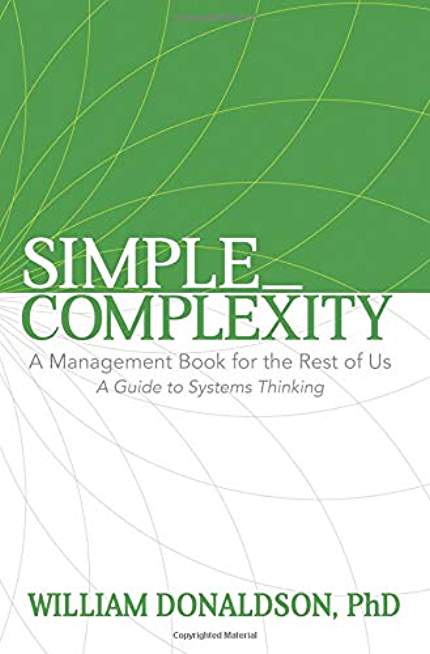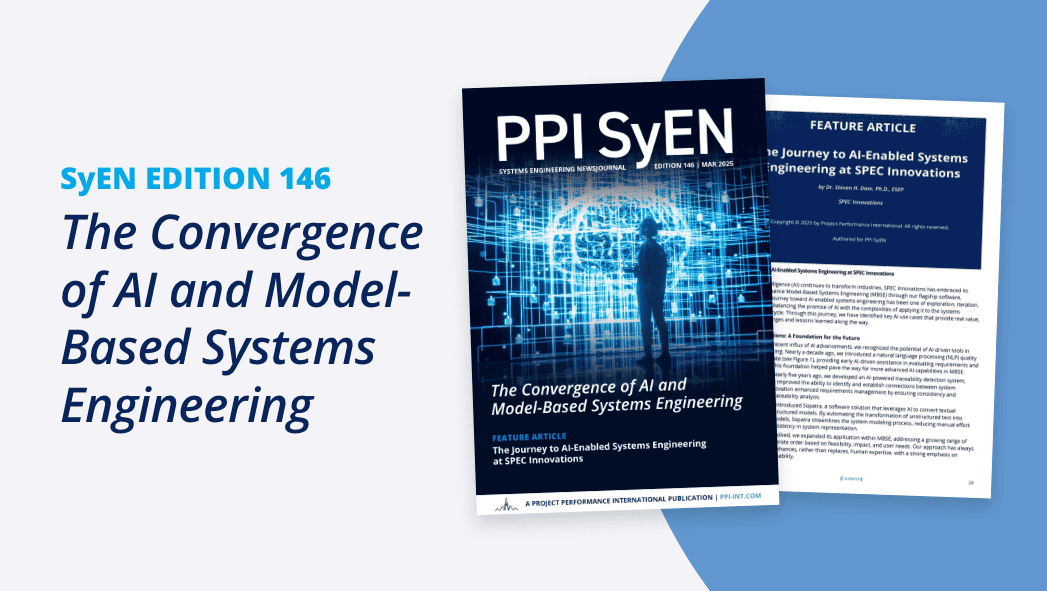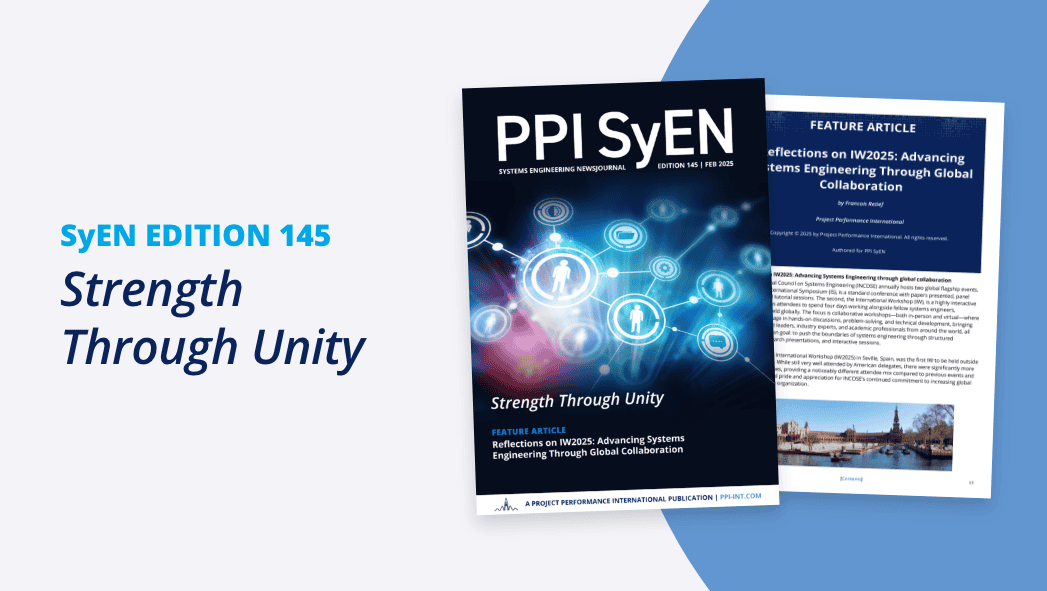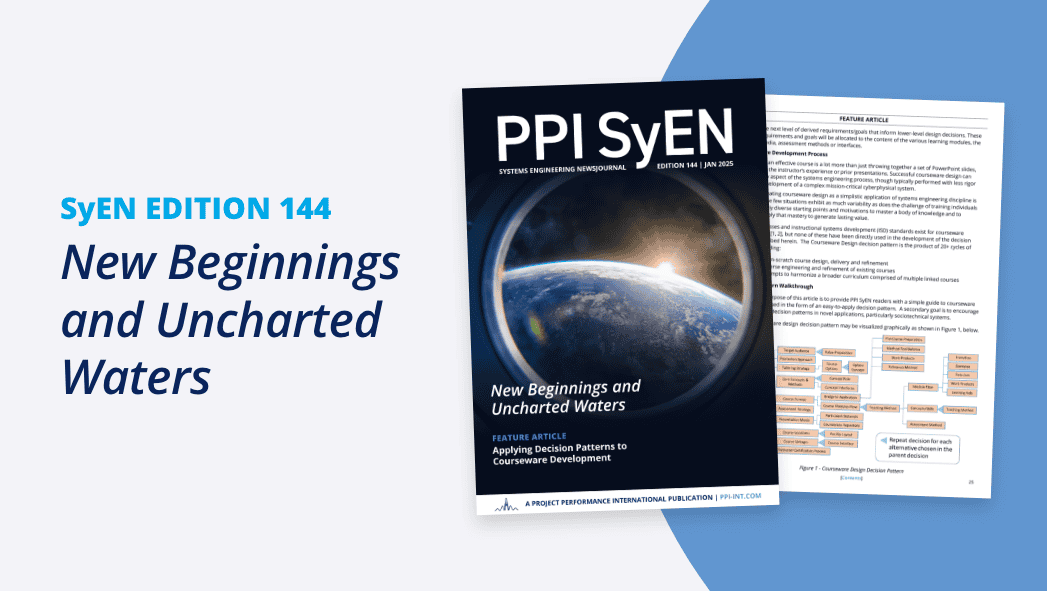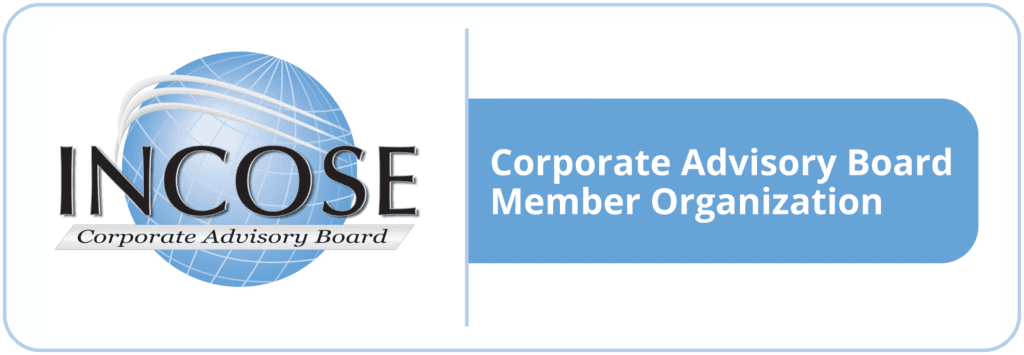IN THIS EDITION
1. Quotations to Open On
2. Feature Article
2.1 A Model for Exploring and Improving Organizations as Systems by Kevin Nortrup
3. Additional Articles
3.1 Working Outside of Your Comfort Zone by Taras Mykytyn
3.2 INCOSE’s Integrated Data as a Foundation of Systems Engineering
4. Systems Engineering News
4.1 INCOSE Leadership Call for Nominations
4.2 Military Operations Research Society Signs an MOU with INCOSE
4.3 Senior Systems Engineering Position Available at Halliburton in Stavanger, Norway
4.4 Aviation Technology Leaders Affirm Desire to Cut Industry’s Emissions
4.5 Presentation: Earned Value Management for Agile
4.6 Engineers Boost Potential for a Successor to Shrinking Transistors
4.7 INCOSE India forms MBSE Working Group
4.8 Call for Papers: AI4SE 2019
4.9 Webinar: Agile with Scrum and CMMI®: Working Together to Create True Organizational Agility
4.10 Does Your Organization Have Good IT Security Hygiene?
4.11 Webinar: Simulation Modeling for Systems Engineers
5. Featured Organizations
5.1 The Design Society
5.2 International Requirements Engineering Board (IREB)
6. News on Software Tools Supporting Systems Engineering
6.1 The REUSE Company Teams with AI4SE for Joint Event on Artificial Intelligence
6.2 Webinar: Introduction to GENESYS 7.0 with Mark Malinoski
6.3 3SL Announces Arrival of Cradle 7.5
6.4 Introduction to Capella and Arcadia with a Simple System
7. Systems Engineering Publications
7.1 Journal of Empirical Software Engineering
7.2 Integrated Data as a Foundation of Systems Engineering
7.3 Towards Building Knowledge on Causes of Critical Requirements Engineering Problems
7.4 Thinking: A Guide to Systems Engineering Problem-Solving
7.5 The Dawn of System Leadership
7.6 Simple Complexity: A Management Book for the Rest of Us
8. Education and Academia
8.1 Systems Engineering at the University of British Columbia
8.2 Industrial Engineering at Sabancı University: Instanbul, Turkey
8.3 Systems Change in Social Innovation Education
9. Some Systems Engineering-Relevant Websites
10. Standards and Guides
10.1 Best Practices for Using Systems Engineering Standards (ISO/IEC/IEEE 15288, IEEE 15288.1, and IEEE 15288.2)
11. Some Definitions to Close On
12. Conferences and Meetings
12.1 The featured event for this edition is: INCOSE International Conference on Systems Engineering 20-25 July, 2019
13. PPI and CTI News
14. PPI and CTI Events
15. Upcoming PPI Participation in Professional Conferences
1. Quotations to Open On
“MIL-STD-881 on Work Breakdown Structure (WBS) is a standard that imposes a standard framework for counting the cost overruns caused by imposing a standard framework.”
Robert John Halligan
“Leadership is an action, not a position.”
Donald H. McGannon
“Our system of education is trapped in an unspoken irony: The institution with the greatest potential impact on the future is arguably the one most shaped by taking for granted ideas from the past.”
John Wooden
2. Feature Article
2.1 A Model for Exploring and Improving Organizations as Systems
by
Kevin Nortrup, CSEP, CPHIMS, LSSGB, FHIMSS
Email: kevin@sugarcreeksolutions.com
Copyright © 2019 by Kevin Nortrup. All rights reserved.
Abstract
The complexity of modern organizations demands a systemic approach in conducting activities, and failure to approach this complexity systemically is the root cause of most of the problems facing companies and institutions today. This paper proposes a model of an organization with five orthogonal elements: culture, structure, process, technology, and training. These elements must be designed, implemented, and operated as effective subsystems – even more importantly, as interdependent components of the larger system – in order to manage such complexity. Finally, it suggests how this systemic approach can be broadened, distilled, and simplified into a mindset and methodology that enables everyone throughout the enterprise to be an agent for positive change, better quality, and continuous improvement.
Introduction
Practically everything about systems engineering, from conceptualization through decommissioning, happens within organizations. Purpose-driven, collaborative, human undertakings are the contexts and meta-systems that surround the design and utilization of systems of every type. However, it’s difficult to avoid the conclusion that something is terribly, pervasively amiss with our modern corporate endeavors. A handful of recurring failure-mechanisms, in various guises and with situationally specific details, emerge time and time again across industries, markets, and sectors.
It’s almost as if something were systemically malfunctioning in our organizations…
It’s almost as if… we haven’t acknowledged, designed, and operated them – as systems.
As William Donaldson writes in his book, Simple_Complexity:
‘I have commonly asked owners, managers, and board members if their company is a system. Invariably, they answer, “Yes, my company is a system.” I then ask them if they have ever read about or studied systems thinking. The answer is almost invariably, “No.” In my experience, they seem to grasp intuitively that their business is a system, but they have no language or models to guide their thinking.’
Certainly, organizational improvement is not an unexplored frontier. Many disciplines add substantial value as they grapple with understanding and improving organizations: Organization Design, Organizational Psychology, Management Engineering, Process Improvement, Quality Engineering, Quality Management, Quality Improvement, Change Management, Project Planning, Project Management, and countless others.
However, with ever increasing complexity in everything that we face and attempt as human beings, most problems arise in the gaps, overlaps, and interfaces between the conceptual silos that we have erected. In place of such a reductionist approach, we need a more holistic, integrated, systemic approach to understanding, designing, and improving organizations – and we in the systems community should be leading the way in pursuit, refinement, and application of such an approach.
Unfortunately, sometimes systems people can get lost in the proverbial weeds of theory and artifice. The application of systems thinking, science, and/or engineering to a problem usually adds apparent complexity to it – at least temporarily. Pushing through that point to a state of lesser net complexity fulfills the promise and justifies the application. However, too often, the perception (accurate or otherwise) of onlookers is that the net effect is greater complexity – not at all what is needed.
Figure 1 illustrates adding complexity to a problem, then either leaving it in a more complex state (not helpful to its solution) or working further to render it less complex (simpler and easier to solve).
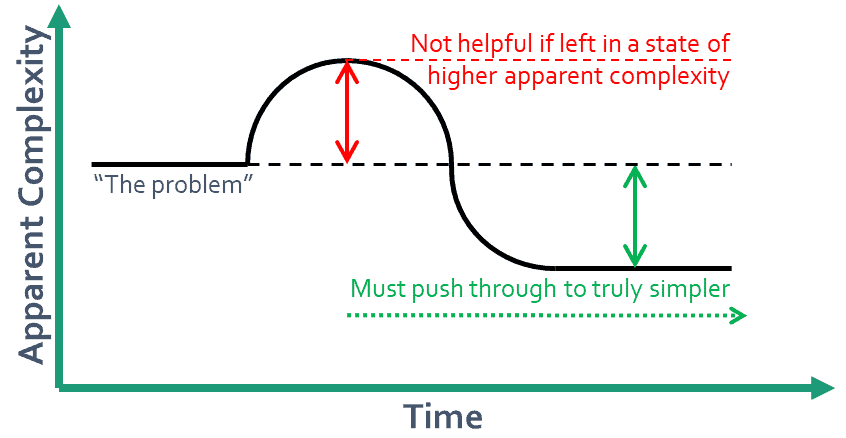
Figure 1: The equivalent of a thermodynamic diagram for complexity
As George Box is quoted as saying, ‘all models are wrong, but some are useful.’ Generally, the usefulness of a model is judged by how well it explains the past and present, predicts the future, and – perhaps most importantly – facilitates the desired. Good models allow practical theorists to equip theoretically-sound practitioners with effective mindsets and methodologies to think and to act systemically in performance of everyday responsibilities.
We need such models for organizations.
Background and Method
My academic and early industrial experience were with technological systems. When my (and others’) technological endeavors were thwarted by non-technical issues, I began to investigate those phenomena with my technical troubleshooting skills and sensibilities. I came to realize that these issues were systemic symptoms of fundamental flaws in the design (or lack thereof) of companies.
Initially, my focus was on corporate reporting-structure. I saw parallels between its virtual design and that of electronics, digital logic, and software – and I came to realize that, if most reporting-structures were submitted as engineering exercises, they would receive failing grades for glaring, fundamental design flaws. Gradually, additional experience and research led to my current five-part model with culture, structure, process, technology, and training as its orthogonal elements.
Still further experience and research brought the current realization that companies are just one branch of the still larger family of organizations: purpose-driven, complex, adaptive, sociotechnical systems of systems that comprise people, processes, and technology. These include companies, institutions, philanthropic organizations, professional societies, hobby clubs – and, on a larger scale, industries, markets, societies, economies, and governments – and the model applies to all of them.
Terminology
INCOSE has an Enterprise Systems Working Group (full disclosure: I’m presently co-chair) that undertakes to promote “Enterprise Systems Engineering.” The reasoning is straightforward: an enterprise (for now, assume synonymous with “organization”) is a sociotechnical system; and we should design, implement, and operate such systems with great care and intentionality, to maximize desired emergent characteristics and behaviors while minimizing undesired ones.
However, this terminology carries some semantic baggage. To most people (especially in North America), “Enterprise Systems” constitutes information technology for business, and “Systems Engineering” encompasses designing and administrating computer networks. To many other people, “Systems Engineering” is synonymous with massive technical projects in aerospace and defense.
Therefore, as appropriate, intuitive, and attractive as its construction might be, “Enterprise Systems Engineering” fights what may be a losing battle against preconception by the general public.
I’ve recently been drawn to the label, “Organizational Engineering.” It’s nicely and concisely descriptive: the intentional, methodical design of organizations. It bypasses the preconceptions about “Enterprise Systems,” “Systems Engineering,” and even “systems” by avoiding such terminology.
Furthermore, I appreciate the commonality between “organization” and “organism.” Although it is helpful to model an organization as a complex, sociotechnical system of systems, I find many useful analogies when describing it as an artificial life form: it has a technical component that must be intentionally designed and an organic component that must be intentionally cultivated.
Description of the Model
The left-hand portion of Figure 2 shows the familiar vision, mission, and purpose. Hardly novel, these are included to document assumptions, to establish context, and to clarify terminology. Vision establishes “why” the organization exists; vision drives mission (purpose) and goals (objectives), which are the long-term and short-term specifications respectively of “what” the organization does in support of its “why”. Together, “why” and “what” constitute the strategy of the organization.
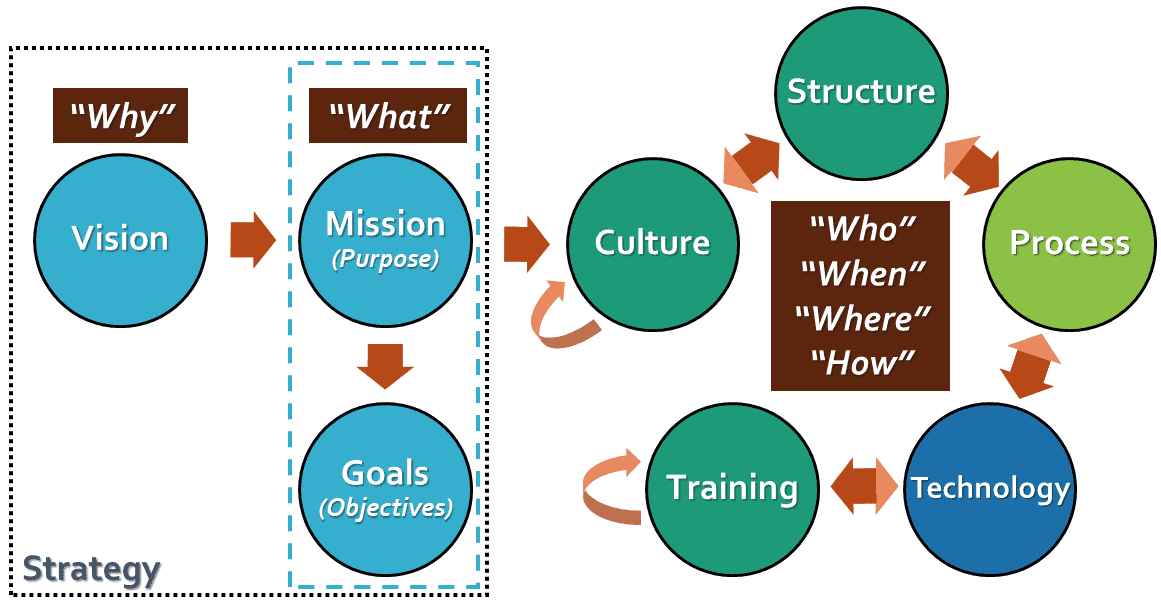
Figure 2: Top-level view of the proposed model for organizations
The strategy (collectively) and the goals (most directly) drive the operational portion of the proposed model; the five elements of the model are organizational culture, structure, process, technology, and training. Together, these subsystems define the “who”, “when”, “where”, and “how” of accomplishing the “what” of the organization. Their proper individual operation and synergistic interoperation is essential to maximize the desired emergent behaviors of the larger system – achieving the purpose and objectives of the organization – while minimizing undesired emergent behaviors.
To illustrate: the subsystems of an electric car might include energy-storage, motor, transmission, wheels/steering, and supervisory control. No amount of fine-tuning of the control algorithms can fully overcome diminished capacity in the energy-storage, shorted windings in the motor, transmission stuck in a particular gear, or wheels with restricted range of motion. Similarly, no amount of process-improvement can fully overcome toxic organizational culture, adversarial structure, unreliable technology, or insufficient training – or a mismatch or poor operation between them.
There is extensive interoperation between and among these five elements of the organization. However, both for design and for troubleshooting, there is a natural cascade of influence and of prioritization, as shown by the arrows in Figure 2.
- Establish the strategy by articulating the vision (“why”), identifying the mission (long-term “what”), and deriving the objectives (short-term “what”).
- The vision and mission influence the culture, which is the set of actual corporate beliefs, values, and priorities. Culture may not agree with official or published policies; it is defined and communicated by directions chosen and decisions made, and by behaviors prohibited, tolerated, or rewarded. It establishes “operating points” between individual initiative vs. directed effort; process flexibility vs. strict methodology; accountability vs. forgiveness; etc.
- Note: beliefs => values => priorities => decisions => actions => behaviors => attitudes
- The mission and culture drive the structure, which is the fundamental division of labor: who does what, alongside whom, directed/coordinated by whom, dependent upon whom. This structure can “make or break” an organization, according to how well the responsibilities are partitioned, balanced, coordinated – and staffed.
- Mission, culture, and structure drive the process (workflow), which is the familiar prescriptive description of the flow of data and work-product between operational steps; the operations and value-added that occur at each step; and the sequence and timing of those steps. Process should always serve culture and structure, not the other way around.
- Process drives the choices of technology and infrastructure (including the layout of workspaces, storage, and buildings, for examples). On rare occasion, process may need to accommodate innovative or legacy technology, but generally technology empowers people to perform specified process.
- Everything else drives training, which equips individuals to perform process (according to their responsibilities within the structure) with the technology and within the culture, to accomplish the goals and mission toward the vision. Development cultivates the personal growth, wellness, and capabilities of individuals in ways less directly tied to their work.
- Upon finishing training and development, reverse direction, working back and forth along the sequence, adjusting as needed to ensure that all elements are aligned and in order. (This stage persists indefinitely as part of continuous improvement: monitor, assess, and adjust.)
To illustrate: “alarm fatigue” is a healthcare phenomenon wherein caregivers become desensitized to alarms from patient-monitoring devices, due to the frequency (even omnipresence) of spurious alarms. Patients have died from the resulting inattention to genuine alarms. Such incidents are devasting to the patient’s family, but the hospital and caregiver also suffer in the aftermath.
It may be tempting to blame the individual caregivers involved. However, assuming that the caregivers genuinely want to take proper care of the patient, and that the hospital vision and mission were similarly motivated, what else might have gone wrong? Looking at each of the organizational elements, where might the system have failed to make it easy to do “the right thing” and difficult to do “the wrong thing?”
- Does the technology have the necessary adjustability to accommodate the necessary range of patients and conditions? Is such capability a “must-have” of the purchase specification?
- Does process include: verifying incoming devices for proper adjustability of alarms; placing them into inventory with known, generally valid default settings; confirming and adjusting the specifically relevant alarm settings when placing the device into service for each and every patient; quickly investigating every alarm event as a potentially life-threatening emergency; and performing root-cause analysis and remediation for every false alarm?
- Or, does structure place people who receive, inventory, and service devices into a department apart from the clinicians, possibly with vague delineations of who has what responsibilities, or even with conflicting or adversarial objectives and metrics?
- Does culture tolerate, even cultivate, self-protective behaviors and sentiments, such as, “Yes, that’s what it says we’re supposed to do, but if we did that, it’d drive us crazy”?
- Does training explicitly underscore the cultural values and expectations, the structural allocation of responsibilities, the mandatory steps in every process, and full competence and confidence in adjunct technology? Does development equip individuals with skills for coping with stress and for responding assertively, actively, and decisively to potential hazards?
- Should the strategic goals be amended to include remediation of the above-mentioned issues?
An understanding of the five organizational elements, their individual contributions, and the collective interoperation gives greater granularity and specificity, both to design and to troubleshooting.
Improving Quality through the Model
Quality management, process improvement, and similar disciplines have had unquestionable success in addressing emergent issues and increasing efficiency in mass-production systems. However, as those systems and their environments grow in complexity, the disciplines and supplemental systems that seek to manage and to improve them also become more complex – with growing risk of unintended consequences from such compounded complexity.
Furthermore, traditional quality-management and process-improvement efforts tend to center on individuals with specialized skill sets, often cloistered in separatist departments whose objectives and initiatives may not always align with those of other departments or of the larger organization. This can create adversarial objectives and an “us-versus-them” atmosphere within the organization, further disenfranchising workers whose connectedness and motivation may already be limited by organizational silos and bureaucracy.
Finally, such efforts also run the risk of localized or irrelevant optimization. As Peter Drucker noted in The Effective Executive, “Efficiency is doing things right; effectiveness is doing the right things.” Such a critical distinction can be lost in the quest to quantify quality.
Healthcare historically has been the responsibility of elite experts who diagnosed and managed acute illness of patients primarily through episodic intervention. However, that model is not sustainable, and it is transitioning to a greater emphasis on cultivating healthy, preventative lifestyles that promote inherent wellness. Shortfalls and setbacks will still require the temporary imposition of external remedial structures (such as casts and crutches on broken legs), but only until inherent wellness is restored.
Similarly, much of present-day quality management and process improvement relies upon episodic intervention and external imposition of structure by experts. Similarly, the focus must transition to cultivation of inherent wellness in organizations. Imagining them as artificial life forms, their immune systems and capacity for self-healing must be restored: everyone throughout the organization must accept distributed, contributory responsibility for continuous, organic improvement of quality.
Such a transition requires a simpler, more efficient, yet highly effective concept of quality. The traditional, quantitative concepts and methods of quality remain extremely powerful, but they are out of reach for most people in an organization.
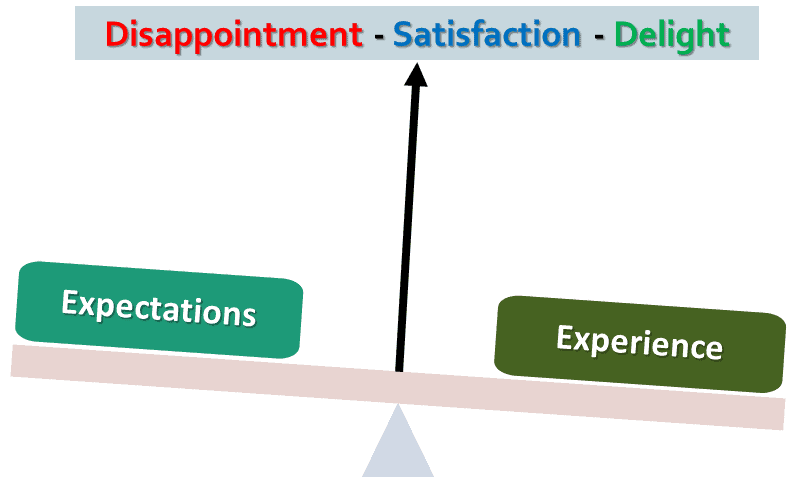
Figure 3: A conceptualization of qualitative quality
Figure 3 illustrates a qualitative concept of quality that applies easily and equally to any system:
Quality is the degree to which Experience meets or exceeds Expectations.
- Experience < Expectations : Disappointment (low quality)
- Experience >= Expectations : Satisfaction (high quality)
Improving quality can be accomplished by increasing (improving) experience and/or by decreasing (managing) expectations. This applies to expectations and experience not only between the organization and its environment, but also between departments and individuals within the organization. Furthermore, it applies bi-directionally at every interface (external and internal): both parties have both expectations and experiences of the interaction’s unfolding.
A customer’s experience of “poor quality” can originate anywhere within the organization, or even within the customer’s own expectations – and that first-level cause of the noted disappointment was itself most likely caused, enabled, or foreshadowed by disappointment earlier and elsewhere. The cascade of experiences not meeting expectations may have begun far away in time and space.
Such an understanding both demands and facilitates a substantial shift in paradigm:
- “Quality” is not an esoteric alchemy with specialist wizards and separatist departments; instead, it is a cultural commitment that experience will meet or exceed expectations!
- A “Quality System” is not a department or process that imposes quality onto an otherwise deficient organization; instead, it is an organizational system of inherently high quality!
If quality and the responsibility for it are inherent and distributed (rather than supplemental and localized), then the monitoring and remediation of potential threats to quality must also be inherent and distributed. A qualitative definition of quality as “ensuring that experiences meet or exceed expectations” enables everyone throughout the system to have such ability.
Harnessing Disappointment to Improve Quality
Wherever and whenever experience falls short of expectations, the resulting disappointment serves as a “check-engine” light that invites investigation into a part of the organization whose proper operation is suddenly in question. Disappointment can be a valuable resource: it is an embryonic problem-statement. Harnessing disappointment can drive and fulfill the promise of continuous improvement, by utilizing everyone throughout the organization as agents of change.
This requires a cultural climate of trust, safety, and unity of purpose. The culture must value honest discussion, appreciative inquiry, root-cause analysis, continuous experimentation, ongoing adjustment and improvement – and the restoration of collegial professional relationships. The process must facilitate comfort in expressing and addressing disappointment, while acknowledging potential emotional implications and moderating potential drama. Leadership’s objectives must include cultivation of open dialog and genuine responsiveness throughout the organization.
No disappointment is too trivial to investigate; it is better to “nip it in the bud” before it cascades into a significant quality problem or devolves into frustration, anger, or bitterness. Many instances of disappointment will be resolved simply between the individuals involved; some situations will require mediation by a facilitator or escalation to higher authorities; and larger systemic issues may require more extensive troubleshooting by a supplemental team.
Critiques and Concerns
My research into this area has not been exhaustive, but it has been substantial. For more than 35 years, I’ve explored numerous books, conferences, newsletters, webinars, blogs, and other media. From each such exploration, I discover and incorporate useful ideas into the model on a regular basis, thereby adding to its breadth, depth, and clarity. I respectfully leave other concepts and models to individuals with whom they resonate, even if they do not resonate with me.
I find the Zachman Framework to be simultaneously overreaching and insufficient. I question whether Holacracy addresses the gamut of root issues, and I am skeptical that its strict egalitarian philosophy is workable across a wide range of real-world situations. The focus of Human-Systems Integration seems too specific to effect the necessary positive change throughout organizations.
Some quantitative assessments and rubrics, perhaps like the Capability Maturity Model Integration, would be helpful to extend application and to chart progress of organizations. For such, the model itself needs greater capability and maturity, transitioning further from art into engineering.
Some – both engineers and non-engineers – might claim that science and engineering cannot deal with human beings as they would with hydraulic fluid or electrical current: people are highly complex, adaptive, variant, and even chaotic. However, people are not random: psychology, sociology, economics, game theory, and many other disciplines endeavor to characterize and to bound human behavior. Furthermore, the “certainty” of most science and engineering rests upon abstractions and assumptions that are invalid at deeper levels.
General Systems Theory initially sought to provide new models for human organizations, even as it recognized applicability to cybernetics long before the complexity of technology mandated systemic treatment. The inclusion of people as essential internal elements of “the system” (not merely as stakeholders or interfacing to it) is not only permissible but essential. Organizations are systems, and we disregard that reality at our own risk.
Summary
Organizations are man-made, sociotechnical systems of people, process, and technology. We should design, implement, and operate them with great care and intentionality, as systems – thereby maximizing their desired emergent characteristics and behaviors, while minimizing undesired ones.
The proposed model establishes organizational culture, structure, process, technology, and training as elements of such systems. These provide a series of lenses through which to perform design and troubleshooting. Within this systemic context, a qualitative definition of quality allows every individual throughout the organization to be an agent of its positive change, by harnessing their disappointment to investigate and to remediate the early roots of potential quality issues.
An organization is the pattern through which we accomplish almost anything of importance: not just processes and products of systems engineering, but the fruits of any purpose-driven, collaborative, human undertaking. When we fail to design and operate organizations skillfully and deliberately as sociotechnical systems – when we fail in their care and feeding as artificial life forms – we jeopardize the effectiveness, efficiency, sustainability, scalability, reliability, and resilience of our endeavors. We need discussion, collaboration, and coalescence of organizational initiatives into a holistic approach to cultivate healthy organizations – and that is what the proposed model aspires to do.
References
Nortrup, K. (2019). Disappointment-Driven System Improvement in Healthcare. In Embracing Complexity in Health: The Transformation of Science, Practice and Policy. Sturmberg, J. P. (Ed.). Cham, Switzerland: Springer.
Donaldson, W. (2017). Simple Complexity. United States: Morgan James Publishing.
Patterson, K., Grenny, J., McMillan, R., and Switzler, A. (2012). Crucial conversations: Tools for Talking when the Stakes are High. Singapore: McGraw-Hill education.
Patterson, K., Grenny, J., Maxfield, D. G., McMillan, R., and Switzler, A. (2018). Crucial Accountability: Tools for Resolving Violated Expectations, Broken Commitments, and Bad Behavior. Singapore: McGraw-Hill Education.
Smith-Acuña, S. (2011). Systems Theory in Action: Applications to Individual, Couples, and Family Therapy. Hoboken, NJ: John Wiley & Sons.
About the Author
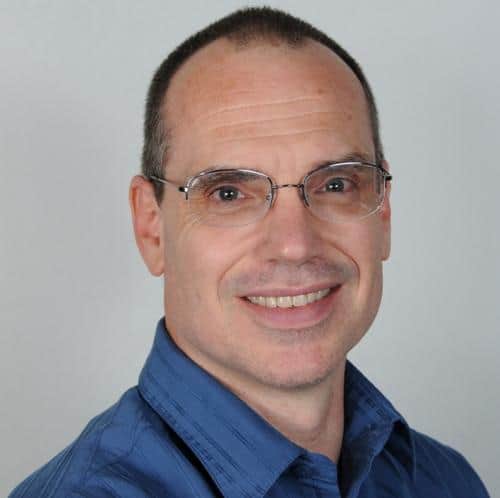 Kevin Nortrup graduated summa cum laude from the University of Illinois in Computer Engineering. He serves on the Boards of Directors of the Society for Engineering and Management Systems (SEMS) and of the International Society for Systems and Complexity Science for Health (ISSCSH). He is a Fellow Member of HIMSS (FHIMSS), as well as an active member of the Society for Health Systems (SHS), and of the International Council on Systems Engineering (INCOSE) for whose Enterprise Systems Working Group he serves as co-chair.
Kevin Nortrup graduated summa cum laude from the University of Illinois in Computer Engineering. He serves on the Boards of Directors of the Society for Engineering and Management Systems (SEMS) and of the International Society for Systems and Complexity Science for Health (ISSCSH). He is a Fellow Member of HIMSS (FHIMSS), as well as an active member of the Society for Health Systems (SHS), and of the International Council on Systems Engineering (INCOSE) for whose Enterprise Systems Working Group he serves as co-chair.
Kevin holds a Lean Six Sigma Green Belt (LSSGB), and he is a Certified Professional in Healthcare Information and Management Systems (CPHIMS) and a Certified Systems Engineering Professional (CSEP). For his application of systems-thinking and systems-engineering to management-engineering and process-improvement (ME/PI) in healthcare, Kevin received the 2018 SHS/HIMSS Excellence in Healthcare Management Engineering/Process Improvement Award.
As Principal at Sugar Creek Solutions, Kevin researches, practices and champions a transdisciplinary approach to managing the complexity of organizations, one that recognizes them as “artificial life-forms” whose health is best accomplished by restoration and cultivation of inherent wellness, not by episodic imposition of external remediation.
3. Additional Article
3.1 Working Outside of Your Comfort Zone
Taras Mykytyn
Email: taras.mykytyn@gmail.com
President of the Chesapeake Chapter of INCOSE, Virginia USA
As Provided in the “President’s Point of View” for the Chesapeake Chapter Monthly Newsletter
System Engineers (SEs) are disciplined individuals who are focused on addressing challenging technical problems on any given program. SEs have specific skills, knowledge, expertise, tools, processes, and procedures that are followed based on past success and experience. How does the system engineer adapt to the future challenges on programs while maintaining their expertise and skills? The key here is to be flexible and adapt to changes in one’s environment, and also be poised to address any new technologies and new ways to collaborate and communicate with stakeholders, partners, and program leadership.
This article is an introduction to the topics noted at the end of this article, which are planned for future articles of the INCOSE Chesapeake Chapter Newsletter. It’s important for the systems engineering discipline to take an aggressive and bolder approach to making a major impact on any program. Technology and the environment are changing at a more dramatic pace than ever before. Some examples of these changes are:
- Cloud technology and integrated services (Infrastructure as a Service (IaaS), Platform as a Service (PaaS), Software as a Service (SaaS)) [1];
- Dev-Sec-Ops[2] for quick software development and deployment of capabilities into production/operations;
- Time-to-market pressures where market penetration and being first into a market may mean survival of your company;
- Short-windows of opportunity for assessing and addressing technical environments for mission critical capabilities; and
- Constant demand for advanced analytics for Big Data[3] problems and the associated better visualization and reporting capabilities.
SEs must learn to embrace these changes and bring innovative ideas and approaches to multi-disciplinary teams as technical leaders and as knowledge managers. Understanding the drivers and priorities of the customer is very important. But more important is providing the customers, users, and stakeholders a quick assessment of the nature of the scope, impacts, and challenges that lay ahead on a specific program, product development, or service deployment. Providing upfront, focused engineering, to bring emphasis to a desired end-state for a product, service, or capability, sets the stage for the level of complexity and engineering that needs to be addressed. Coordination between the engineering, software development, integration, testing, deployment, support, and program management teams has to become more streamlined, and we need to be adept at working more efficiently and effectively. This is where SEs can provide “the big picture” and “focused-engineering” discipline to a program taking on more of a role as a product, services, or capability as technical lead and manager. This is not typically how SEs are viewed, but in the future, the ability to perform this role becomes increasingly important for a program’s success.
Future articles of the INCOSE Chesapeake newsletter will address the challenges noted above and hopefully provide SEs a push to “think differently” as they are challenged by the fast and ever-changing pace of today’s technology and operational environments. Change is good and getting out of one’s comfort zone should be personally and professionally motivating and encouraging for SEs. Tackling new and complex challenges is what SEs should be motivated about in their careers.
Future proposed topics to be addressed include:
- Diversity + Expanding Beyond the Federal Government.
- SE Tools of the Future – “Not Your Typical SE Toolbox”.
- Multi-Disciplinary Integration – “Cooperation with Others at a Whole New Level”.
- “Taking Two Steps Back to Move Forward” (an SE’s Reflection).
- “Who’s in Charge” – Managing Large Programs.
- Managing Information in Near Real Time (NRT) – “Keeping All Stakeholders in Sync”.
- “How Does SE Fit into a Dynamic Software Development Environment?”
- “Engineering Details – Who Cares?”
- “Can I Make a Difference as an SE?”
- “Fixing What’s Broken and What’s Working”.
- Seeing the “Technical” Forest above the “Engineering” Trees.
The Chapter welcomes feedback concerning which topics readers would like addressed initially, and also concerning whether there are other topics of interest that should be addressed.
About the Author
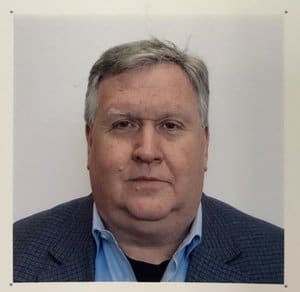 Mr. Taras Alexander Mykytyn has over 25 years of systems engineering experience developing, integrating, testing, and deploying complex systems and services into operations. A focus has been integrating systems engineering and program management activities. Taras earned a BS from Drexel University, Philadelphia, PA USA in Systems Engineering with a minor in Biomedical Engineering. He also earned a MS from the University of Maryland College Park USA in Engineering Management with a minor in Systems Engineering with research dissertation on “Managing Large Scale Programs with Automated Tools”. Taras volunteers his time not only with INCOSE but he has interest in the local student community. Taras volunteers with Howard County high school students through the Engineering Design and Development class. He engages with the students three times a year to assist them with their project and to ensure progress to a final design review. Taras believes this is an excellent way to give back to the community and to future scientists and engineers.
Mr. Taras Alexander Mykytyn has over 25 years of systems engineering experience developing, integrating, testing, and deploying complex systems and services into operations. A focus has been integrating systems engineering and program management activities. Taras earned a BS from Drexel University, Philadelphia, PA USA in Systems Engineering with a minor in Biomedical Engineering. He also earned a MS from the University of Maryland College Park USA in Engineering Management with a minor in Systems Engineering with research dissertation on “Managing Large Scale Programs with Automated Tools”. Taras volunteers his time not only with INCOSE but he has interest in the local student community. Taras volunteers with Howard County high school students through the Engineering Design and Development class. He engages with the students three times a year to assist them with their project and to ensure progress to a final design review. Taras believes this is an excellent way to give back to the community and to future scientists and engineers.
3.2 Advancing Systems Engineering Around the World
by
Ralph Young
PPI SyEN Editor
At the heart of INCOSE is the ability to connect people. Whether you are interested in finding ways to increase your circle of influence or would like to work on a particular issue, INCOSE chapters and Working Groups offer powerful points of connection. To this end, INCOSE Chapters and Working Groups serve to stimulate collaboration in systems engineering activities throughout the 69 participating chapters, 35 countries, and 45 working groups.
Chapters play an essential role in the achievement of INCOSE’s goals and objectives through organizing a multitude of professional and social programs; attracting new members from industry, government and academia; supporting technical activities that advance the state and art of systems engineering; and, showcasing INCOSE as the international authoritative body on systems engineering that it is.
INCOSE Working Groups, which function within individual chapters as well as on the global organizational level, provide resources to stakeholders who want to share and value information on applications of systems engineering in multiples industries, systems engineering in academia and the application of systems engineering to government activities.
Working Groups (WGs) are under the direction of INCOSE’s Technical Operations (TechOps) and with the guidance of TechOps, they provide technical products, foster technical interactions among stakeholders, host technical events and host technical information repositories.
The symbiotic relationship between Chapters, Working Groups and the overall INCOSE structure feeds the overall mission and goal of INCOSE which is to serve people and organizations at all stages of engagement.
Participating in Chapter and/or Working Group activities contributes to the development of leadership skills.
For more information on Chapters or to find a Chapter Near You, visit this site.
Learn more about Working Groups and TechOps, read here.
EDITORIAL
3.2 INCOSE’s Integrated Data as a Foundation of Systems Engineering
by
David Long
McLean, Virginia USA
See Section 7.2 below for an article describing this publication.
Definitions (from Webster’s Dictionary):
Data – a collection of facts, observations, or other information related to a particular question or problem; as, the historical data show that the budget deficit is only a small factor in determining interest rates.
Information – Any fact or set of facts, knowledge, news, or advice, whether communicated by others or obtained by personal study and investigation; any datum that reduces uncertainty about the state of any part of the world; intelligence; knowledge derived from reading, observation, or instruction.
‘The intended message of this newly released paper is that we need to be more conscious of data which fundamentally underpins the systems engineering effort. This does not mean the purpose of systems engineering is data. The purpose is delivering the desired results to the customer effectively and efficiently via the system of interest. However, rather than focusing on artifacts (be they documents, diagrams, or models, or processes), we should focus on the information at the foundation of a given systems engineering effort. Processes help us elicit, analyze, and manage the information. Artifacts enable us to communicate the information. But it is the information – and our effective and successful use of the information – that allows us to perform systems engineering.
We elicit, analyze, and manage information in the journey from requirements and features to instantiated capabilities and characteristics in a system which define the usefulness to users and customers.’
4. SYstems Engineering News
4.1 INCOSE Leadership Call for Nominations
Deadline: 22 August 2019
by
Christine Kowalski
The Board of Directors has delegated the responsibility for collecting nominations and identifying suitable candidates to the Nominations and Elections Committee. You have the opportunity to vote for the following positions:
Leadership Position (Induction to be held at the 2020 International Workshop) |
Term of Office |
| President-Elect | 2 yrs. / 2 yrs. Pres |
| Treasurer | 2 yrs. |
| Director for Academic Matters | 3 yrs. |
| Director for Strategic Integration | 3 yrs. |
| Director for EMEA Sector
(nominated by EMEA Chapter Pres) |
3 yrs. |
To nominate yourself of other individuals for a leadership role, please visit the following link:
https://www.incose.org/about-incose/Leadership-Organization/nominations
4.2 Military Operations Research Society Signs an MOU with INCOSE
The International Council of Systems Engineering (INCOSE) has announced that it has signed a memorandum of understanding (MOU) with the Military Operations Research Society (MORS). MORS is a non-profit membership organization focused on national security operations research. The mission of MORS is to enhance the quality of analysis that informs national security and homeland defense decisions.
This MOU is intended to promote a collaborative relationship in related professional areas that are of mutual interest and benefit to the INCOSE and MORS. INCOSE and MORS initially wish to develop and promote best practice processes and guidance, training, and supporting materials that can be used in projects and organizations, in the fields of operation research and systems engineering. This agreement is intended to formalize the working relationship and arrangements in operations research, systems engineering, and others mutual areas of interest.
About the International Council on Systems Engineering
INCOSE is a not-for-profit membership organization that promotes international collaboration in systems engineering practice, education and research. INCOSE’s mission is to “address complex societal and technical challenges by enabling, promoting and advancing systems engineering and systems approaches.” Founded in 1990, INCOSE has more than 70 chapters and over 17,000 members worldwide. For additional information about INCOSE visit www.incose.org
About the Military Operations Research Society
The First Military Operations Research Symposium (MORS), sponsored by the Office of Naval Research (ONR) – Pasadena, was held at Corona Naval Ordnance Lab, Corona, California in August of 1957. By the Eighth MORS Symposium the event became a nationally-oriented joint-service meeting. In April 1966 the Military Operations Research Society was incorporated.
MORS is proud of its heritage as it closely reflects the heritage of Operations Research in the United States. MORS recognizes those individuals who have made long-lasting and significant contributions to the Society as Fellows of the Society. They are some of the great minds in military and national security OR work. For additional information about MORS visit www.mors.org
4.3 Senior Systems Engineering Position Available at Halliburton in Stavanger, Norway
As a result of increased activity in the Wireline & Perforating product service line, Halliburton is looking for a Technician within the Open Hole and Cased Hole segment.
From the website:
Job description:
Under general supervision services, diagnoses and repairs Wireline Surface Systems and Downhole Tools for both open and cased hole services while providing leadership and guidance to lower level personnel.
Visits field locations when needed to help solve equipment technical problems and follows up on equipment repair at headquarters.
On offer:
Competitive pension- and insurance scheme
Company health service
Beneficial employee stock-purchase plan
Focus on technology and further development
Highly skilled colleagues in an international environment
Qualifications:
Bachelor Sc. in Electrical or Electronics Engineer
Minimum 4 years of experience in wireline maintenance.
Requires knowledge Open Hole and Formation Tester Tools.
Personal qualities:
The position requires that you champion the Company’s HSE procedures.
Our team is looking for initiative colleague to work with and who likes to work independently.
You should be prepared to share and receive knowledge and experience.
We are looking for you if you are strategic and focused.
Contact Persons:
Hiring Manager: Fabio Roncetti Pimenta (+47) 51 83 71 40
Recruiter: Torhild Anfinsen (+47) 51 83 74 57
Deadline: July 2nd 2019
4.4 Aviation Technology Leaders Affirm Desire to Cut Industry’s Emissions
At the 2019 Paris Air Show on 18 June 2019, the chief technology officers (CTOs) of seven of the world’s major aerospace companies issued a joint statement on their joint and cooperative commitment to reduce carbon dioxide () emissions by the aviation industry. The companies were, in alphabetical order, Airbus, Boeing, Dassault Aviation, GE Aviation (part of the General Electric group), Rolls-Royce, Safran and United Technologies (which owns Collins Aerospace and Pratt & Whitney).
The CTOs pointed out that the aviation industry contributed 2% of human produced emissions, and that the industry had pledged itself to cut its net emissions despite the significant increase in demand for air transport and travel. The industry, through its representative association, the Air Transport Action Group (Atag), had become the first industrial sector to commit itself to cutting its emissions to half of its 2005 levels by 2050 and, in the much shorter term, to limit the growth of its net emissions by next year.
The achievement of a sustainable aviation industry depends on three lines of technology development. These are – the “relentless” development of aircraft and aero-engine technology and design to increase fuel efficiency and cut emissions.
“As industry CTOs we are committed to driving the sustainability of aviation,” they affirmed. “We believe in this industry and its role in making our world a brighter and safer place. We also strongly believe we have an approach to make aviation sustainable and play an even bigger role in our global community.”
Read the full article here.
4.5 Presentation: Earned Value Management for Agile
Wednesday, July 17, 2019, 6:00 PM 8:00 PM EST.
Johns Hopkins University Applied Physics Laboratory
Abstract
Software development projects present a unique and complex project management challenge. In order to remain relevant throughout the development, the project must be able to adjust and adapt to emerging technology and requirements. In addition, projects must have finite start and end points, with cost, schedule, and performance metrics. To this end, Earned Value Management (EVM) has been used successfully to measure how a project is meeting the cost and schedule plan. EVM also allows project managers to determine the risks associated with achieving the planned cost and schedule goals and provides a mechanism to estimate expected project completion and final cost. Agile software development, specifically the Scrum approach, has applied EVM to measure software development progress.
Cost
$25: the Registration Cost is for dinner only. The Lecture is open to all at no cost and begins at 7 pm.
 About the Speaker
About the Speaker
Caitlin Kenney, P.E. has over nine years of experience working as systems engineering contractor for multiple DoD clients. She is currently supporting the US Navy Program Executive Office (PEO) Integrated Warfare Systems (IWS) for the AEGIS combat systems integration. Caitlin is a graduate of the University of Maryland, College Park, Systems Engineering Master’s Program.
4.6 Engineers Boost Potential for a Successor to Shrinking Transistors
Scientists’ pursuit of the smallest possible transistor has allowed more of them to be packed onto each chip. But that race to the bottom is almost over: Researchers are fast approaching the physical minimum for transistor size, with recent models down to about 10 nanometers – or just 30 atoms – wide.
“The processing power of electronic devices comes from the hundreds of millions, or billions, of transistors that are interconnected on a single computer chip,” said Dr. Kyeongjae Cho, professor of materials science and engineering at The University of Texas at Dallas. “But we are rapidly approaching the lower limits of scale.”
To extend the quest for faster processing speed, the microelectronics industry is looking for alternative technologies. Cho’s research, published online April 30 in the journal Nature Communications, might offer a solution by expanding the vocabulary of the transistor.
Conventional transistors can convey just two values of information: As a switch, a transistor is either on or off, which translates into the 1s and 0s of binary language.
One way to increase processing capacity without adding more transistors would be to increase how much information each transistor conveys by introducing intermediate states between the on and off states of binary devices. A so-called multi-value logic transistor based on this principle would allow more operations and a larger amount of information to be processed in a single device.
“The concept of multi-value logic transistors is not new, and there have been many attempts to make such devices,” Cho said. “We have done it.”
Through theory, design and simulations, Cho’s group at UT Dallas developed the fundamental physics of a multi-value logic transistor based on zinc oxide. Their collaborators in South Korea successfully fabricated and evaluated the performance of a prototype device.
Cho’s device is capable of two electronically stable and reliable intermediate states between 0 and 1, boosting the number of logic values per transistor from two to three or four.
Cho said the new research is significant not only because the technology is compatible with existing computer-chip configurations, but also because it could bridge a gap between today’s computers and quantum computers, the potential next landmark in computing power.
Read the full article here.
4.7 INCOSE India forms MBSE Working Group
INCOSE India has initiated a local technical working focused on the topic of Model-Based Systems Engineering (MBSE). This local working group will work to complement the central INCOSE MBSE working groups and focus on meeting special needs of the India Chapter members, such as developing domain-specific examples, developing training or influencing university curriculum. A kick-off meeting will take place this month in Pune, possibly with telephone dial-in.
4.8 Call for Papers: AI4SE 2019
Artificial Intelligence for Systems Engineers will hold its first workshop on the Application of Artificial Intelligence for Systems Engineering from 12- 15 November 2019 (further details in Section 6.1) at Carlos III University of Madrid, Leganés, Madrid, Spain.
The AI4SE workshop focus is on the following application areas:
- AI for digitalization of Engineering
- AI for optimization of System of Interest (SOI) Operation
- AI for Technical and Organizational Management
- Systems Engineering for Intelligent System
The Artificial Intelligence for Systems Engineering Workshop, AI4SE is designed to be the meeting point for the industry and academia to share promising on-going or relevant past experiences where AI is applied to improve Systems Engineering processes, methods or tools, with a clear focus on practical applications. The organizing committee invites submissions of results from industrial projects, scientific works and demonstration activities on how models and technologies, from AI, cover the following (but not restricted to):
- O1. Digitalization of Engineering
- O2. Optimization of SOI Operation and Maintenance
- O3. Technical and Organizational Management
- O4. Systems Engineering for Intelligent Systems
The Call for Papers is now open and the organizing committee invites submissions of results from industrial projects, scientific works and demonstration activities.
Deadline for submissions: July 15, 2019.
4.9 Webinar: Agile with Scrum and CMMI®: Working Together to Create True Organizational Agility
Wednesday, June 26, 2019
2.00 PM Eastern Daylight Time
Summary
In 2018, 80 percent of CMMI appraisals conducted around the world were by organizations using Agile development processes. That’s because they realize that CMMI can scale and strengthen Agile implementations while addressing business problems outside the scope of Agile approaches.
In this 45-minute webinar, our panel of experts share their insights as practitioners who have realized improved Agile performance with CMMI:
- Jeff Dalton, President of Broadsword, is a Certified CMMI Lead Appraiser and principle author of CMMI Institute’s “Guide to Scrum and CMMI: Improving Agile Performance with CMMI” and a new book titled “Great Big Agile: an OS for Agile Leaders”.
- Michael King is the Chief Technology Officer and Chief Information Officer at Halfaker and a client of Broadsword’s. In his role, Michael provides mission critical system support for government organizations.
- Ron Lear, panel moderator, is the Director of IP Development and Chief Architect for CMMI products and services at CMMI Institute.
Key takeaways from this webinar:
- Learn how CMMI helps Agile deliver on its promises by:
- Allowing to scale disparate agile projects to an organizational level
- Plugging the capability gaps in Agile such as managing and delivering services and suppliers, configuration management, etc.
- Ensuring the changes and improvements are continual and always performance-focused
- Gain keen, practical insights into how to best adopt CMMI and realize and sustain continual performance improvement
- Understand how CMMI V2.0 can facilitate adoption for Agile organizations
Register for the webinar here.
4.10 Does Your Organization Have Good IT Security
Hygiene?
by
Kevin Beling
Editor’s note: See the Some Definitions section in this issue for a list of definitions related to IT security.
The promises of productivity in the cloud continue to ring true. Access to your data from anywhere, at any time, with the ability to collaborate in real-time, is truly revolutionary and is providing a competitive advantage for organizations in every industry. However, access from anywhere means that without sufficient protections, the wrong people can gain access to your data by easily hacking usernames and passwords.
So, how can companies ensure their user credentials aren’t compromised?
The short answer is, they can’t. The vast amount of stolen records and ever-evolving hacking tools makes it impossible to be assured of protection with only a username and password standing in the way of a data breach. However, with multi-factor authentication (MFA), your risk of compromised usernames and passwords is significantly reduced. This added layer of defense will ensure that the hackers are stopped in their tracks right then and there because they won’t be able to prove their identity.
Data Breach Commonalities
Recent breaches in the news have had a common theme: they did not enable MFA and they practiced poor password hygiene. This applies equally to your personal life and work. With a (relatively simple) process of brute-force attacks to gain credentials, hackers are able to obtain personal identifiable information (PII) and exposing businesses and individuals to incredible risk.
Once they obtain the data, it is sold on the black market and then reused for nefarious purposes, often in the form of compromising a high-value target. Criminals can even automate this process with inexpensive and widely available tools – in some cases, these despicable software developers offer technical support!
What can individuals and organizations do?
Use unique and complex passwords for each and every account and change them often.
For an individual or small business, use a password manager to make this easier and more secure, and require MFA to access the password manager.
For businesses of any size, implement enterprise-grade Multi-Factor Authentication along with Single Sign-On (SSO) within other business applications in the cloud. Your business will have choices about how sophisticated the MFA solution is, based on your organizational risks.
The applications are getting better and easier to use – in fact, you no longer need to carry an authentication token/FOB on your key chain. It’s now an easy-to-use application on your smartphone that can be configured to only ask for MFA when needed, such as when a new device asks for access.
Single Sign-On (SSO) can be implemented to keep most or all passwords joined together in a single login. Productivity doesn’t need to be lost and organizational data can be as safe (or safer) in the cloud as opposed to a traditional network. That being said, the proper security measures must be put in place. The promise of the cloud is exponential, but good security practices must keep pace with the technology.
4.11 INCOSE Certification (SEP) Cost Increase
SEP Registration and recertification costs are set to increase by 2021. This increase will apply to transcription of equivalent certificates (SE-ZERT®). The previously free paper exams, which are often offered at national conferences (eg TdSE, SWISSED), will in future be charged. As of Summer 2021 in the northern hemisphere, the cost of paper exams will be between USD20 and USD40
4.12 Webinar: Simulation Modeling for Systems Engineers
Wednesday, July 10, 2019
11.00 AM Eastern Daylight Time
Simulation modeling is often associated with industrial engineering and operations research, but it has much to offer the systems engineer. It is being used to plan, design, manage and upgrade systems in a wide range of industries, including manufacturing, healthcare, energy, logistics & transportation, retail and services. The predictive and analytical nature of the technology makes it a powerful tool for the engineer. This presentation will give a broad overview of the history, concepts, technology and uses of simulation models. Through case studies and live model demonstrations, attendees will gain an appreciation for how these models, including digital twins, can be applied to specific systems engineering experience areas
Speaker
Rainer Dronzek has held engineering and management positions in the aerospace, oil & gas and consulting industries. He began his systems engineering career on the Space Shuttle Program at the Kennedy Space Center, where he was first introduced to the art and science of simulation modeling. He has managed projects and standing teams providing modeling services, founded a simulation consulting firm, and organized simulation events and conferences. He is the Sales Director – North America for The AnyLogic Company and holds a B.S. in Electrical Engineering from Bradley University.
Register for the webinar here.
5. featured organizationS
5.1 The Design Society
The Design Society (DS) is an association dedicated to research, education, practice, and outreach in engineering design. The DS looks at: how we create new artefacts and systems, how we think about this creation process and what the impact is of these human-created artefacts on the world we live in.
Objectives
The objectives of the Society are to promote the development and propagation of design knowledge across all disciplines by:
- creating and evolving a formal body of knowledge about design and designing;
- supporting and improving design research, education, practice, and management;
- promoting co-operation among design researchers, practitioners, educators and managers;
- promoting design publications and their dissemination;
- organizing international and national conferences, workshops, and student events;
- operating Special Interest Groups on different design topics and regional Chapters;
- co-operating with other bodies with similar and complementary design interests.
Origins and Activities
The Design Society was founded in 2000 building on the previous activities of the Workshop Design Konstruktion (WDK) group, especially the organization of the International Conference on Engineering Design (ICED) series of conferences held since 1981. The Design Society is a charitable body under Scottish law and is incorporated as a Company Limited by Guarantee and Not Having a Share Capital under UK law (Companies Act, 2006).
Access the DS Home Page here
5.2 International Requirements Engineering Board (IREB)
Who IREB is
IREB, the International Requirements Engineering Board, a non-profit organization, is the provider of the CPRE (Certified Professional for Requirements Engineering) certification scheme. The board consists of leading RE representatives, who come from science, research, industry and consulting.
Brief history
IREB was created in 2006. The board members joined forces with the vision to create an internationally accepted and professional basis for RE, in order to give this discipline the importance and the orientation that corresponds to its added value for the industry.
In the meantime IREB has become a worldwide renowned body of experts for the individual certification of professionals in Requirements Engineering.
Since 2007, more than 46,000 professionals in 79 countries have passed the CPRE Foundation Level examination.
The CPRE certification scheme
The Certified Professional for Requirements Engineering stands for an elaborated three level certification concept developed by IREB.
It addresses to individuals working in Business Analysis, Requirements Engineering and Testing, having highest demands on their work quality.
Access the IREB Home Page here
6. News on Software ToolS Supporting Systems Engineering
6.1 The REUSE Company Teams with AI4SE for Joint Event on Artificial Intelligence
The REUSE Company (TRC) and Artificial Intelligence for Systems Engineering will be hosting a Joint Event on Artificial Intelligence on November 12-15. This event will be a joint event between the TRC Forum together with the first workshop on the application of Artificial Intelligence for Systems Engineering (AI4SE). The week is called AI4SE Multievents Week and is a series of workshops, forums, project meetings, tool exhibitions and more, on the application of Artificial Intelligence for Systems Engineering. During the Multievents Week you can visit the open events AI4SE and TRC Forum, but there are also several Research Project Events meetings going on at the same time.
On November 13-15 we at The REUSE Company will present the new solutions they are building around bringing requirements inside the Model Based Systems Engineering trend by means of Artificial Intelligence and Machine Learning.
Artificial Intelligence (AI) has become a trending topic within Systems Engineering. The application of Machine Learning algorithms, Big Data approaches, together with Natural Language Processing, allow the representation, structure and application of domain knowledge. The result can be improvements in decision management, automatic reasoning, trade-off analysis, predictive support and many other interesting applications to Systems Engineering. This event puts the focus on the future of Systems Engineering and its connection with AI.
The main topics for this forum will be:
- Integrating natural language requirements in MBSE tools and SE tools
- Integrating models in requirements management (RMS) tools
- Systems Engineering interoperability within the supply chain
- Integrating traceability, quality and V&V within the Systems Engineering tools
- Application of Artificial Intelligence and Machine learning to Systems Engineering tools
The REUSE Company will officially present the latest version of the tools, V20, formed by:
- RQA – QUALITY Studio – Managing SE work-products (incl. Requirements) quality
- V&V Studio – Complete Verification and Validation framework for requirements, models, etc.
- RAT – AUTHORING Tools for Systems Engineering tools – integration with large OEMs
- TRACEABILITY Studio – Integral traceability system integrated with the rest of the tools
- Engineering Studio – First version of The REUSE Company’s Systems Engineering ALM.
- KM – Knowledge Manager – Ontologies and libraries management
Artificial Intelligence for Systems Engineering (AI4SE)
AI4SE is designed to be the meeting point for the industry and academia to share promising on-going or relevant past experiences where AI is applied to improve Systems Engineering processes, methods or tools, with clear focus on practical applications.
6.2 Webinar: Introduction to GENESYS 7.0 with Mark Malinoski
In releasing the latest version of the model-based systems engineering software—GENESYS—Vitech enhances the capabilities of this robust tool. In this webinar, Mark Malinoski will highlight:
- The enhanced connection of architecture and analytics with the new ModelCenter MBSE connector
- New model management capabilities, including reuse of patterns and library components
- An alert framework notifying users when their selected aspects of the model change
- Enhanced configuration management capabilities, enabling teams to implement their desired configuration management approaches
- Usability feature, notably spellcheck, and control of the diagram frameblock
Sign up for the webinar here
6.3 3SL Announces Arrival of Cradle 7.5
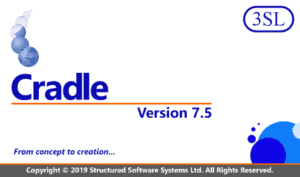
On 11 June 2019, 3SL announced the arrival of Cradle 7.5. The release is available as a new product, or an upgrade for users with maintenance.
Features include (from the site):
ReqIF Support
Support for ReqIF (Requirements Interchange Format).
This allows Cradle to exchange information with other requirements management and systems engineering tools that also support ReqIF. Please note that you need to carefully define a mapping between the information in your Cradle schema and the schema used in the other tool.
Web Services Interface
Support for Web Services, a new REST-based HTTP API. This provides both session-based and ‘single-shot’ interaction with Cradle through a WSI (Web Services Interface) that provides a range of facilities to query the schema, query the items and links in the database, and to create or modify items and links. The WSI uses an API connection license.
ODBC Support
Support for users who wish to store their data in a third-party RDBMS (Relational Database Management System) Oracle or MySQL) as opposed to the file-based ISAM database supplied free with Cradle. This new capability allows you to store each Cradle database in any of ISAM, Oracle and MySQL. The Cradle Database Server (CDS) can interact with ISAM and/or Oracle and/or MySQL all at the same
time if necessary.
Note that you need to provide the ODBC driver for the RDBMS and you need to perform some initial configuration of the RDBMS before Cradle can interact with it. 3SL provides full details of the steps
needed in the Cradle documentation. This gives Cradle another unique capability. Cradle is the only tool which provides a choice of database back-ends to store your information.
Matrices/Navigations
Enhanced Matrix Details dialog, variable substitutions within navigation attribute values.
Queries on Frame Content
Support sequential testing for frames in queries.
Systems Modelling
Integration between model-based (specifications, data definitions, diagrams) and your project’s requirements and notes (which are not sub divided into models, non-model information) shown in all types of diagram in the FAD (functional, architecture, data) group of notations. This is a major extension to Cradle’s modelling capabilities. It allows you to show, in any diagram, how the elements of the model
(functions, processes, equipments, interfaces and so on) are linked to:
- Information earlier in the lifecycle, such as requirements
- The system structure, such as a SBS
- Information later in the lifecycle, such as test cases
Some SysML notations allow requirements to be shown in a model. This is helpful. However, the new non-model information symbols provided by this enhancement offer far more capability than is offered in SysML.
Project Setup
Firstly, a new DateTime category and frames to help support ReqIF. Enhanced option for selecting/entering link attributes for cross references. Additionally, the ability to disable/enable sidebars for a particular user type.
User Setup
New options (skills) when applying a role to a User Profile.
6.4 Introduction to Capella and Arcadia with a Simple System
Tuesday, July 2, 2019
10.00 AM Eastern Daylight Time
In this Webinar, the speaker Prof. Peter Jackson will:
- Distinguish between systems engineering, which is concerned with the entire design-build-test-deploy cycle of systems development, and systems architecture, which is concerned with system concept development and architectural design
- Contrast the System Modeling Language, SysML, appropriate for systems engineering, with the more focused tool, Capella, and its associated methodology, Arcadia, which is more appropriate for systems architecture development
- Provide an overview of the attractive features of Capella, from the point of view of initiating modelers into the language of systems architecture and briefly demonstrate our longer free public tutorial
 About the Speaker
About the Speaker
Professor Jackson is Head, Engineering Systems and Design Pillar at Singapore University of Technology and Design. He served as the Director of the Cornell University Systems Engineering Program and led the introduction of its online Master of Engineering degree program in systems engineering ranked in the top eight such programs by US News and World Report. He published over thirty articles and is the author of an introductory text on systems engineering, ‘Getting Design Right: A Systems Approach’. He is a celebrated instructor of industrial engineering and the creator of dozens of experiential learning games and tools.
Register for the webinar here.
7. Systems Engineering Publications
7.1 Journal of Empirical Software Engineering
Editor’s note: The Feature Article in this issue, Naming the Pain in Requirements Engineering, was published in the October 2017 issue of this journal.
From the Springer.com Website:
The Empirical Software Engineering Journal provides a forum for applied software engineering research with a strong empirical component, and a venue for publishing empirical results relevant to both researchers and practitioners. Empirical studies presented here usually involve the collection and analysis of data and experience that can be used to characterize, evaluate and reveal relationships between software development deliverables, practices, and technologies. Over time, it is expected that such empirical results will form a body of knowledge leading to widely accepted and well-formed theories. The journal also offers industrial experience reports detailing the application of software technologies – processes, methods, or tools – and their effectiveness in industrial settings. Empirical Software Engineering promotes the publication of industry-relevant research, to address the significant gap between research and practice.
ISSN: 1382-3256 (Print) 1573-7616 (Online)
Publisher: Springer
7.2 Integrated Data as a Foundation of Systems Engineering
Published by
INCOSE
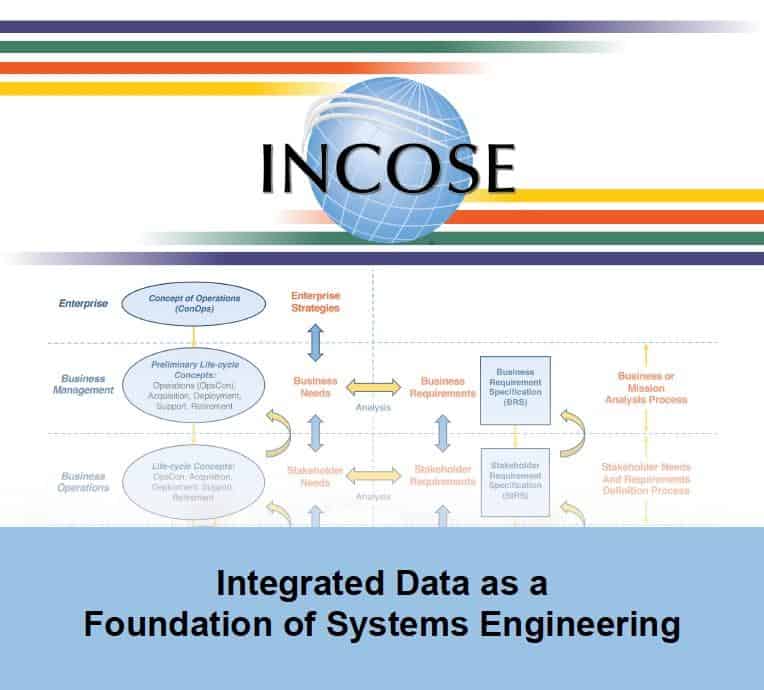
The intended audience of this whitepaper includes project and product managers and systems engineers who are stakeholders in activities defined by the systems engineering discipline and are thinking about, or are in the process of, implementing systems engineering within their organization.
This whitepaper will help those who are wondering how to successfully implement the intent of the MBSE Initiative within their organization and those that are interested in maturing their current systems engineering capabilities toward a more data-centric implementation of systems engineering—irrespective of the size and complexity of the system under development and the size and culture of the organization developing the system.
Download the publication through INCOSE Connect here.
7.3 Towards Building Knowledge on Causes
of Critical Requirements Engineering Problems
by
Marcos Kalinowski, et al
Niterói, Brazil
Proceedings of the 27th International Conference on Software Engineering and Knowledge Engineering (SEKE), 2015
Abstract
Many software projects fail due to problems in requirements engineering (RE). The goal of this paper is to gather information on relevant RE problems and to represent knowledge on their most common causes. We replicated a global family of RE surveys in the Brazilian context and used the data to identify critical RE problems and to build probabilistic cause-effect diagrams to represent knowledge on their common causes. The survey was answered by 74 different organizations, including small, medium and very large sized companies, conducting both, plan-driven and agile development. The most critical RE problems, according to those organizations, are related to communication and to incomplete or underspecified requirements. This paper provides the full probabilistic cause-effect diagrams with knowledge on common causes of the most critical identified RE problems online. We believe that the knowledge presented in the diagrams can be helpful to support organizations in conducting causal analysis sessions by providing an initial understanding on what usually causes critical RE problems.
International Conference on Software Engineering
7.4 Thinking: A Guide to Systems Engineering Problem-Solving
by
Howard Eisner

From the Amazon.com Website:
Thinking: A Guide to Systems Engineering Problem-Solving focuses on articulating ways of thinking in today’s world of systems and systems engineering. It also explores how the old masters made the advances they made, hundreds of years ago. Taken together, these considerations represent new ways of problem solving and new pathways to answers for modern times. Special areas of interest include types of intelligence, attributes of superior thinkers, systems architecting, corporate standouts, barriers to thinking, and innovative companies and universities.
This book provides an overview of more than a dozen ways of thinking, to include: Inductive Thinking, Deductive Thinking, Reductionist Thinking, Out-of-the-Box Thinking, Systems Thinking, Design Thinking, Disruptive Thinking, Lateral Thinking, Critical Thinking, Fast and Slow Thinking, and Breakthrough Thinking. With these thinking skills, the reader is better able to tackle and solve new and varied types of problems. The book:
- Proposes new approaches to problem solving for the systems engineer;
- Compares as well as contrasts various types of Systems Thinking;
- Articulates thinking attributes of the great masters as well as selected modern systems engineers;
- Offers chapter by chapter thinking exercises for consideration and testing; and
- Suggests a “top dozen” for today’s systems engineers.
Format: Kindle, Hardcover, Paperback
Publisher: CRC Press; 1 edition (January 30, 2019)
ISBN:
ISBN-13: 978-0367112202
ISBN-10: 0367112205
7.5 The Dawn of System Leadership
The deep changes necessary to accelerate progress against society’s most intractable problems require a unique type of leader—the system leader, a person who catalyzes collective leadership.
The Stanford Social Innovation Review Winter 2014 edition feature article “The Dawn of System Leadership” by Peter Senge, Hal Hamilton, and John Kania describes the need for “system leaders” – those who catalyze collective leadership, to address society’s most intractable problems.
7.6 Simple Complexity: A Management Book for the Rest of Us
A Guide to Systems Thinking
by
Dr William Donaldson
From the Amazon Website:
Every manager knows a business is a system, yet very few have studied systems thinking or system dynamics. This is a critical oversight, one which Simple_Complexity remedies. Simple_Complexity reveals the fundamental system archetype at work in your enterprise and prescribes new and exciting ways to re-invigorate your management thinking. Picking up where the greats in management thought leave off, Simple_Complexity provides a systems context that powerfully enriches traditional management thought and practice.
Format: Kindle, Hardcover, Paperback
Publisher: Morgan James Publishing (March 7, 2017)
ISBN:
ISBN-10: 1683500741
ISBN-13: 978-1683500742
8. Education and Academia
8.1 Systems Engineering at the University of British Columbia
The University of British Columbia (UBC) is a global center for teaching, learning and research, consistently ranked among the top 20 public universities in the world and recently recognized as North America’s most international university. UBC offers several engineering programs, among them, a Master’s in Engineering Management. Examples of technical research in the area of systems engineering and related fields conducted by UBC are available at:
https://open.library.ubc.ca/search?q=systems%20engineering&collection=ubctheses.
8.2 Industrial Engineering at Sabancı University
Instanbul, Turkey
The Industrial Engineering program at Sabancı University is designed to train and bring forth professionals who can effectively participate in and become an active member of multi-functional teams dealing with the planning, design, and implementation of modern manufacturing systems. In developing and integrating systems, an industrial engineer faces the challenge of bringing together human, physical, and economic resources as well as knowledge in optimal fashion. Coordination and control are essential management concepts or tools for producing and operating manufacturing systems.
The Industrial Engineering curriculum is designed to prepare students as entrepreneurs, problem solvers and change agents in a specific environment. To that end, a solid foundation in mathematics, in the physical, biological and engineering sciences, and in management science and behavioral science is targeted. Group projects where students learn to function as a team constitute an essential part of course-work. Interaction with other disciplines is emphasized: students are strongly encouraged to take courses from other disciplines and participate in multidisciplinary project teams. This will be improving their skills of communicating with other disciplines so as to enable them to function in complex scientific and technical environments throughout their careers.
8.3 Systems Change in Social Innovation Education
Why social entrepreneurship and innovation education need to incorporate systems change concepts, and where educators and institutions can begin.
by
Daniela Papi-Thornton & Joshua Cubista
Stanford Social Innovation Review
Systems change—the idea that we can design interventions that fundamentally reshape social or environmental systems that perpetuate injustice or negative results—continues to gain interest across the social sector. Indeed, the term is popping up all over social innovation and social entrepreneurship convenings, publications, and dialogues. Yet many of the educational models we use to teach social entrepreneurship and innovation fail to teach students to think critically about or build activities that contribute to systems change. If we are going to reshape our engineering, social, ecological, economic, and cultural systems in response to the challenges and opportunities that face humanity in the 21st century, we need to reimagine and redesign how we live and work together—and how we learn.
9. Some Systems Engineering-Relevant Websites
Systems Engineering Research and Publications
A list of systems engineering research areas and publications provided by the Systems Engineering Department at Worcester Polytechnic Institute (USA).
https://www.wpi.edu/academics/departments/systems-engineering/research-publications
Systems Engineering Publications
A list of technical reports, books, journal articles, book chapters, and conference papers provided by the University of Oxford (UK).
http://www2.eng.ox.ac.uk/systemseng/publications
Journal of Industrial Engineering and Management Systems
Industrial Engineering and Management Systems (IEMS) covers all areas of industrial engineering and management sciences including but not limited to, applied statistics & data mining, business & information systems, computational intelligence & optimization, environment & energy, ergonomics & human factors, logistics & transportation, manufacturing systems, planning & scheduling, quality & reliability, supply chain management & inventory systems. This site enables submissions of articles as well as downloading of past contributions.
http://www.iemsjl.org/AboutUs/03.php
10. Standards and Guides
10.1 Best Practices for Using Systems Engineering Standards (ISO/IEC/IEEE 15288, IEEE 15288.1, and IEEE 15288.2)
Prepared by:
Office of the Deputy Assistant Secretary of Defense (USA) for Systems Engineering
Office of the Under Secretary of Defense for Acquisition, Technology, and Logistics
April 2017
The purpose of this document is to assist:
- Acquirers in tailoring the 15288 Standards to meet and communicate project needs.
- Acquirers in incorporating appropriate language into a Request for Proposal (RFP) to invoke the standards and express relative importance of the standards in proposal evaluations.
- Offerors in developing their proposals to leverage existing organizational processes, or propose alternative value-added tailoring, to support the RFP requirements and comply with the standards as tailored.
- Acquirers in evaluating an offeror’s ability and commitment to effectively implement SE processes compliant with acquirer’s requirements based on the proposed Systems Engineering Management Plan (SEMP), project plan, master schedule, and past performance.
- Acquirers in monitoring and enforcing a supplier’s compliance with the contract and delivery of the product/service/system.
11. Some definitions to close on
The following definitions are provided in the article in section 4.10 of this issue, “Does Your Organization Have Good IT Security Hygiene?”
Multi-Factor Authentication – Multi-factor authentication (MFA) is a method of computer access control in which a user is only granted access after successfully presenting several separate pieces of evidence to an authentication mechanism-typically at least two of the following categories: knowledge (something they know); possession (something they have), and inherence (something they are). Source: Wikipedia.
Single Sign-On – Single sign-on (SSO) is a property of access control of multiple related, but independent software systems. With this property a user logs in with a single ID and password to gain access to a connected system or systems without using different usernames or passwords. Source: Wikipedia.
Mobile Device Management – Mobile device management (MDM) is a type of security software used by an IT department to monitor, manage and secure employees’ mobile devices that are deployed across multiple mobile service providers and across multiple mobile operating systems being used in the organization. Mobile device management software is often combined with additional security services and tools such as Mobile Application Management to create a complete mobile device and security Enterprise Mobility Management solution. Source: Webopedia.
Mobile Application Management – Mobile application management (MAM) describes software and services responsible for provisioning and controlling access to internally developed and commercially available mobile apps used in business settings on both company-provided and “bring your own” smartphones and tablet computers. Source: en.wikipedia.org/wiki/Mobile_application_management
Data Loss Prevention – Data loss prevention (DLP) is a strategy for making sure that end users do not send sensitive or critical information outside the corporate network. The term is also used to describe software products that help a network administrator control what data end users can transfer. Source: proofpoint glossary https://www.proofpoint.com/us/glossary/dlp
Azure Information Protection – Azure Information Protection is a cloud-based solution that helps an organization to classify, label, and protect its documents and emails. This can be done automatically by administrators who define rules and conditions, manually by users, or a combination where users are given recommendations. Source: https://docs.microsoft.com/en-us/azure/information-protection/what-is-information-protection
App security – Application Security is the strategy and actions to prevent security breaches of applications and systems. Because the vast majority of applications are known to have bugs, security issues such as design, development, implementation, and/or deployment flaws, application security is a necessary component. Source: www.developer.com/design/article.php/3760611/What-Is-Application-Security.htm
Advanced Threat Analytics – Advanced Threat Analytics (ATA) is an on-premises platform that helps protect your enterprise from multiple types of advanced targeted cyber-attacks and insider threats. Source: https://docs.microsoft.com/en-us/advanced-threat-analytics/what-is-ata
12. Conferences and Meetings
For more information on systems engineering related conferences and meetings, please go to our website.
The featured event for this edition is:
INCOSE
International Conference on Systems Engineering
20-25 July 2019 – Orlando, Florida
System Applications for Global Challenges

INCOSE’s Annual International Symposium is the largest worldwide annual gathering of people who do systems engineering for four days of presentations, case studies, workshops, tutorials and panel discussions. The program attracts an international mix of professionals at all levels, and includes practitioners in government and industry, as well as educators and researchers. The benefits of attending the Symposium include the opportunity to share ideas, network, build competency, pursue certification, contribute to the advancement of the profession through collaboration on tools, processes and methodologies, learn about new offerings in training and education, and forge new partnerships.
Register for the conference here.
13. PPI and cti News
13.1 Hooroo, Cobber[4]
It is with heavy hearts that we at PPI say goodbye to General Manager Josh Freeman after his 19 years of service to PPI. Over the course of two decades Josh has served PPI and CTI selflessly and has played a pivotal role in managing the team – in doing so becoming so much more than a ‘boss’ to our staff. Empowering, supportive, inspiring and considerate are just a few words that can be used to describe Josh yet even these words fall short in describing Josh’s character. Josh has played a major role in leading and growing PPI and CTI over these 19 years and is responsible for many of the improvements in quality of our services. It is not an easy feat to manage a global training company with employees on six continents, but Josh did this and did it superbly well – smoothly coordinating the planning and execution of training courses, travel and conferences all year round. Josh, we thank you for your outstanding contribution to the company and we wish you all the best during this next phase of your career.
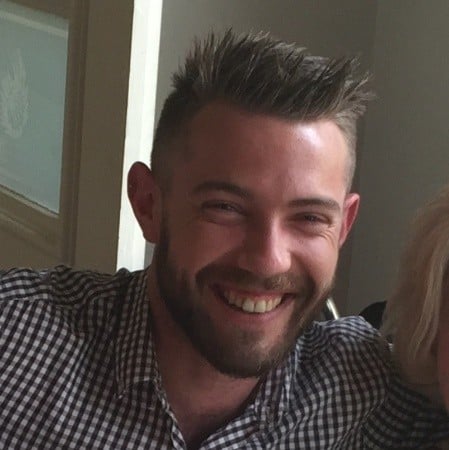
13.2 Robert Halligan to Present on the Aral Sea Human Disaster at the INCOSE IS 2019
During the INCOSE International Symposium, on Wednesday the 24th of July 10:45-11:15, our very own Robert Halligan will be presenting an exciting presentation titled, ‘How Systems Engineering Could Have Prevented the Aral Sea Disaster.’ This presentation will give a brief background to the harrowing man-made natural disaster of the late 1900s through to today, and will outline the systems engineering principles that were violated over several decades that led to the desiccation of the sea. The presentation will also provide a range of examples of the kind of analyses that could have been conducted to deliver a successful and sustainable solution to the problem that existed. If you will be attending the conference, we hope you to see you at Robert’s presentation. The content of the presentation will be as exciting as the outfit Robert will be wearing (hint – it is fitting for the theme). Even if you are unable to attend, please do come and say hi to us at our exhibitor booth; several PPI staff will be in attendance and we are looking forward to seeing you there.
13.3 Accreditation of PPI Courses in South Africa
The following courses are now accredited by the Engineering Council of South Africa (ECSA) for CPD purposes:
- CSEP Exam Preparation Course – 5 Days
- Requirements, OCD & CONOPS in Military Capability Development – 5 Days
- Systems Engineering – 5 Days
- Systems Engineering Management – 5 Days
- Requirements Analysis & Specification Writing- 5 Days
- Architectural Design – 5 Days
- Software Engineering – 5 Days
- Systems Engineering Overview – 3 Days
- Architectural Design – 3 Days
- Requirements Analysis & Specification Writing Fundamentals – 3 Days
- Systems Approach to Design – 2 Days
13.4 Bijan Elahi’s Medical Device Risk Management Interview
Bijan Elahi, PPI’s expert presenter of our “Medical Device Risk Management” 3-day training, recently gave in an interesting interview for Medical Devices Community. The interview covers the following topics:
- The early days of risk management
- Current challenges facing risk managers
- Bijan’s journey in writing his book on medical device risk management.
An excerpt from the interview follows:
If you could teach your students one thing about risk management, what would that be?
“I would like them to understand the language of risk management. Risk management has its own language. It may sound like English, but it is not. Words such as: Harm, Hazardous Situation, and Hazard don’t carry the same meaning as ordinary spoken English. Awareness and mastery of these terms and using them with care will prevent and avoid confusion and lengthy debates.”
Read the full interview here.
13.5 Randall Iliff receives Outstanding Leadership Award from Chicagoland Chapter
Randall Iliff, a PPI Principal Consultants and trainer was pleasantly surprised after delivering his presentation titled ‘Past, Present and Future of Systems Engineering’ on May 16th, 2019 to the INCOSE Chicagoland Chapter. After delivering his presentation, Mr. Iliff received an Outstanding Leadership Award by The Board of Directors of INCOSE Chicagoland Chapter for his outstanding contributions to the INCOSE Chicagoland Chapter over several years. Well done, Randall!
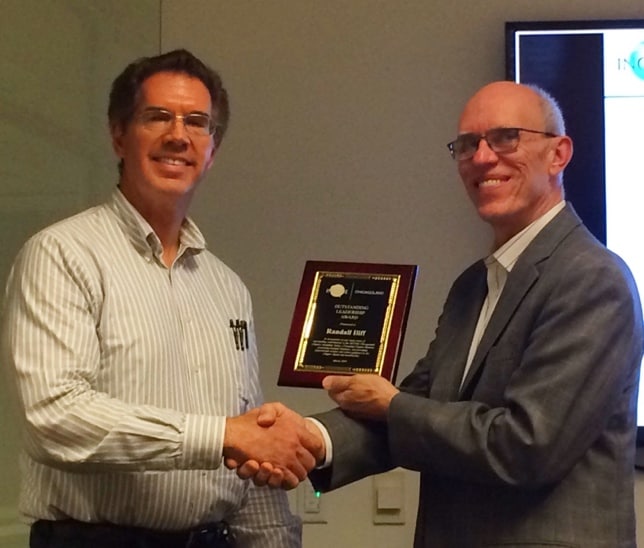
13.6 PPI Participation in the Asia Oceania Systems Engineering Conference
PPI is excited to announce we will be exhibiting at Asia Oceania Systems Engineering Conference (AOSEC) for the first time over October 17th-18th 2019. AOSEC is an international conference on Systems Engineering in the Asia Oceania Region and this year it will be organized by the INCOSE Asia Oceania Sector.
PPI’s Managing Director and Principal Course Presenter, Robert Halligan, and PPI Senior Engineer and Consultant, René King, will be present at AOSEC and would love the opportunity to meet you there! In addition, René will be presenting a paper titled, ‘The INCOSE-PPI Systems Engineering Tools Database Project – What’s Coming?’ More information will follow regarding PPI’s participation in AOSEC in subsequent editions of SyEN.
14. PPI and CTI Events
On-site systems engineering training is being delivered worldwide throughout the year. Below is an overview of public courses. For a full public training course schedule, please visit https://www.ppi-int.com/course-schedule/
Systems Engineering 5-Day Courses
Upcoming locations include:
- Melbourne, Australia (P006-777)
08 Jul – 12 Jul 2019
Requirements Analysis and Specification Writing 5-Day Courses
Upcoming locations include:
- Bristol, United Kingdom (P007-492)
01 Jul – 05 Jul 2019
Systems Engineering Management 5-Day Courses
Upcoming locations include:
- Washington, D.C., United States of America (P1135-170)
09 Sep – 13 Sep 2019
Systems Engineering Overview 3-Day Courses
Upcoming locations include:
- Chantilly, Virginia, United States of America (P884-15)
09 Dec – 11 Dec 2019
Requirements, OCD and CONOPS in Military Capability Development 5-Day Courses
Upcoming locations include:
- Pretoria, South Africa (P958-58)
21 Oct – 25 Oct 2019
Engineering Successful Infrastructure Systems (ESIS5D)
Upcoming locations include:
- Las Vegas, Nevada, United States of America (P2005-3)
02 Dec – 06 Dec 2019
Architectural Design 5-Day Course
Upcoming locations include:
- Pretoria, South Africa (P1768-19)
15 July – 19 July 2019
CSEP Preparation 5-Day Courses (Presented by Certification Training International, a PPI company)
Upcoming locations include:
- Austin, Texas, United States of America (C002-86)
12 Aug – 16 Aug 2019
Medical Device Risk Management 3-Day Course
Upcoming locations include:
- San Francisco, California, United States of America (P1848-4)
26 Aug – 28 Aug 2019
Other training courses available on-site only include:
- Project Risk and Opportunity Management 3-Day
- Managing Technical Projects 2-Day
- Integrated Product Teams 2-Day
- Software Engineering 5-Day
15. Upcoming PPI Participation in Professional Conferences
PPI will be participating in the following upcoming events. We support the events that we are sponsoring and look forward to meeting old friends and making new friends at the events at which we will be exhibiting.
The INCOSE International Symposium 2019
(Exhibiting)
Date: 20 – 25 July, 2019
Location: Orlando, Florida, USA
Asia Oceania Systems Engineering Conference 2019
(Exhibiting)
Date: 17 – 18 October, 2019
Location: Bangalore, India
(Exhibiting)
Date: 21 – 25 October, 2019
Location: Cleveland, Ohio, USA
The INCOSE International Workshop 2020
(Exhibiting)
Date: 25 – 28 January, 2020
Location: Torrence, California, USA
The INCOSE International Symposium 2020
(Exhibiting)
Date: 18 – 23 July, 2020
Location: Cape Town, South Africa
Kind regards from the PPI SyEN team:
Robert Halligan, Editor-in-Chief, email: rhalligan@ppi-int.com
Ralph Young, Editor, email: ryoung@ppi-int.com
René King, Managing Editor, email: rking@ppi-int.com
Project Performance International
2 Parkgate Drive, Ringwood, Vic 3134 Australia
Tel: +61 3 9876 7345
Fax: +61 3 9876 2664
Tel Brasil: +55 12 9 9780 3490
Tel UK: +44 20 3608 6754
Tel USA: +1 888 772 5174
Tel China: +86 188 5117 2867
Web: www.ppi-int.com
Email: contact@ppi-int.com
Copyright 2012-2019 Project Performance (Australia) Pty Ltd, trading as
Project Performance International
Tell us what you think of PPI SyEN. Email us at syen@ppi-int.info.
- See https://www.computenext.com/blog/when-to-use-saas-paas-and-iaas/for an explanation of the differences between them. ↑
- The purpose and intent of DevSecOps is to build on the mindset that “everyone is responsible for security” with the goal of safely distributing security decisions at speed and scale to those who hold the highest level of context without sacrificing the safety required. Today, these same factors have led traditional security leadership to argue hard for a seat at the Executive table. See https://www.devsecops.org/blog/2015/2/15/what-is-devsecops For more information. ↑
- Big data is a term for data sets that are so large or complex that traditional data processing applications are inadequate. Challenges include analysis, capture, data curation, search, sharing, storage, transfer, visualization, querying, and information privacy. ↑
- Hooroo cobber is Australian slang for ‘goodbye friend’. ↑

